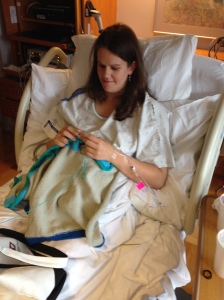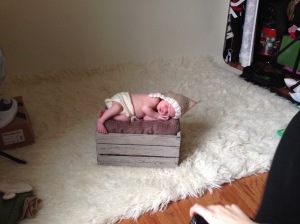The Child for All Seasons MKAL is in full swing on Ravelry! It’s never too late to join, and you can even preview the Autumn Collection before buying. Purchasing the year gets you 12 children’s patterns for one low price, released seasonally throughout the year.
This season, I have designed two of the patterns: the Trail Mix Fingerless Mitts and the Twisted Trails Hooded Sweater. Both are perfect fall knits for the little ones in your life!
Having already knit 4 versions of the Twisted Trails, I decided to make a version with a kangaroo pocket for my godson Michael. I had never knit a kangaroo pocket, so it was a bit of a learning experience. My whole goal was to have the cables travel uninterrupted up the front of the sweater. I achieved that goal and I’m so happy with the results! Although this is not a pattern or an addition to the pattern, any adventurous knitter can use my notes to modify the pattern on their own. If you have questions, jump in on the MKAL forums and I’d be happy to answer them!
1. I began by knitting a rectangle the size that I wanted the inner pocket to be. I used a hoodie belonging to my older son as a guideline and chose to make mine approximately 8″ x 6″. I began with a provisional cast on (onto a spare needle). I also added the bright orange yarn as a lifeline since this was a technique I had not yet tried.
2. Next I began the ribbing according to the pattern. On the first row of the main color, I knit all the stitches without beginning the cable chart set-up. Instead, when I came to the stitches that would center my pocket along the front, I lined up the needles WS together and worked k2tog with one stitch from each needle.
3. After attaching the pocket to the ribbing, I worked the pattern as stated for approximately 1 inch to create some bottom depth for the pattern. At that point, I began working each section flat– the section that was the width of my pocket (including the cable chart) and the section that did not include the pocket. When I reached the length of the pocket, I was ready to join them together. I joined them the same way as before, lining up the needles and working k2tog or p2tog as needed. The difference was that this time I also had to cable as I was working the stitches!
4. Once the sweater was finished, I used mattress stitch to seam the side of the sweater with the pocket rectangle, leaving the opening for the hands.
5. Using the contrasting color (gray) and smaller needles, I picked up and knit 24 sts (a multiple of 4). I worked the same ribbing pattern as indicated for the hood ribbing. Using mattress stitch, I attached the sides to the sweater.
6. The result was a beautiful new hoodie for my nephew’s birthday, shown here modeled by my son Adrian. I am sure this will get plenty of use all season long!
I hope this is helpful to anyone wanting to add kangaroo pockets to their handknits. And if you haven’t already, join us as we knit our way through the year in the Child for All Seasons MKAL!


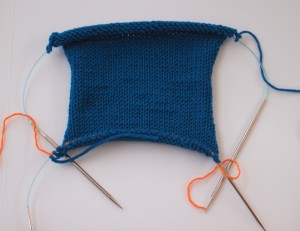


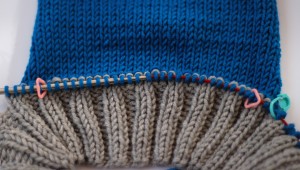





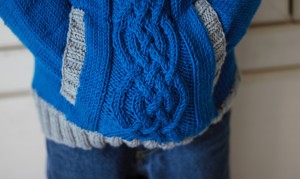



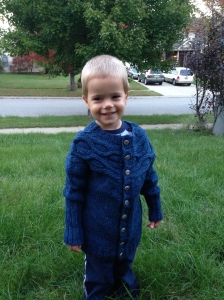










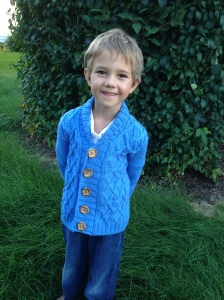

![IMG_4696[1]](https://rossunraveled.files.wordpress.com/2015/02/img_46961.jpg?w=300&h=225)


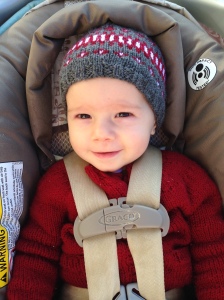








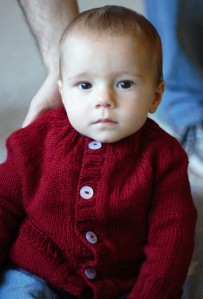





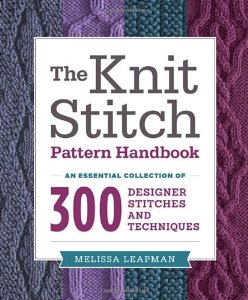






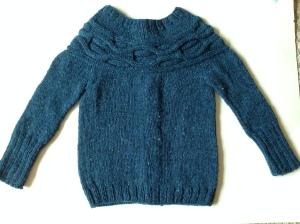


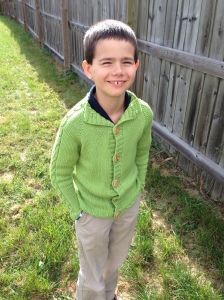



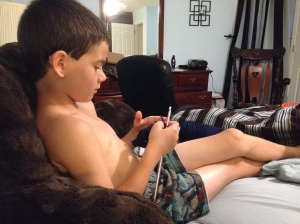











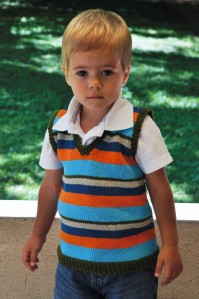









![IMG_2473[1]](https://rossunraveled.files.wordpress.com/2014/04/img_24731.jpg?w=225&h=300)
